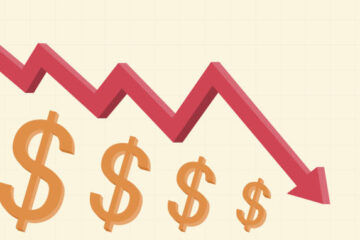These days, when most people talk about inflation, they are referring to everyday items like eggs, milk, and gasoline.
However, over the past five years, car prices have increased at a rate faster than inflation. According to Car Edge, average transaction prices across the new car market increased by 34% between Q4 2019 and Q4.
💵💰Don’t miss the move: Subscribe to TheStreet’s free daily newsletter 💰💵
Popular car brands like Honda and Toyota saw their car prices rise by 35% and 31%, respectively. Honda’s best-selling CR-V crossover has seen its MSRP jump from $25,345 in 2019 to $31,450 in 2025.
The average new car price stood at $49,740 at the start of the year.
Related: Ford could take drastic measures to combat tariffs, leaked memo says
But that trend started to reverse in 2025, as the specter of automotive tariffs forced car companies to lower their prices.
New data from Cox Automotive shows just how affordable new cars have become in 2025.
It’s been a buyer’s market so far in 2025.
Image source: Sullivan/Getty Images
2025 has been a car buyer’s market
New-vehicle affordability improved again in March, reaching its best level in nearly four years.
The average price of new vehicles decreased by 0.2% in the month, according to Kelley Blue Book, and the average auto loan rate rose by just 4 basis points to 10.14%, a level that is 45 basis points lower than it was a year ago.
“Affordability is a key consideration for consumers when vehicle shopping and has been steadily improving over the last several years,” said Jonathan Smoke, chief economist at Cox Automotive.
The average auto payment also fell by 0.2% to $739 per month, a 1.3% decline year over year, and the median weeks of income needed to purchase the average new vehicle fell to 36.7 weeks from a downwardly revised median of 36.9 weeks in February.
The average monthly payment peaked at $795 in December 2022.
“In 2025, we have seen improvements in affordability each month. In March, the average price of a new vehicle decreased once again,” Smoke said.
“This decrease, combined with higher incomes and slightly lower interest rates, more than offset a reduction in incentives. However, the real test will come in April, when tariffs are likely to have more of an impact on the economy and the auto market.”
Like the rest of the world, Cox Automotive isn’t expecting good things from the tariff war the United States launched in April.
Related: Analyst slashes Tesla price target for an unexpected reason
Higher duties will invariably raise prices for both imports and domestically built vehicles. This could cause inventory to pile up, so car companies have for months been planning for the 25% tariffs that took effect.
Carmakers react to tariffs differently
The U.S. auto industry imports about 7.5 million vehicles per year.
That means 7.5 million vehicles could potentially be subject to a 25% tariff the moment they’re offloaded onto U.S. shores.
Recent research from the Center for Automotive Research suggests that auto-import tariffs could increase costs for automakers by more than $100 billion.
German brand Audi, a Volkswagen subsidiary, made the drastic decision to hold cars arriving in the U.S. after April 2 in port rather than offload them and have importers pay the 25% tax levied.
The move affects 37,000 vehicles, enough inventory for about two months of sales, Reuters reported, citing a company spokesperson.
Earlier this month, Mazda sent a letter to its U.S. dealers informing them that it would not raise its sticker prices or tack on import fees for any vehicles already on dealership lots or coming into the country before May 1.
The company expects tariffs to “have a significant negative impact” on the industry and its business and is working to reduce costs elsewhere.
Related: Veteran fund manager unveils eye-popping S&P 500 forecast


